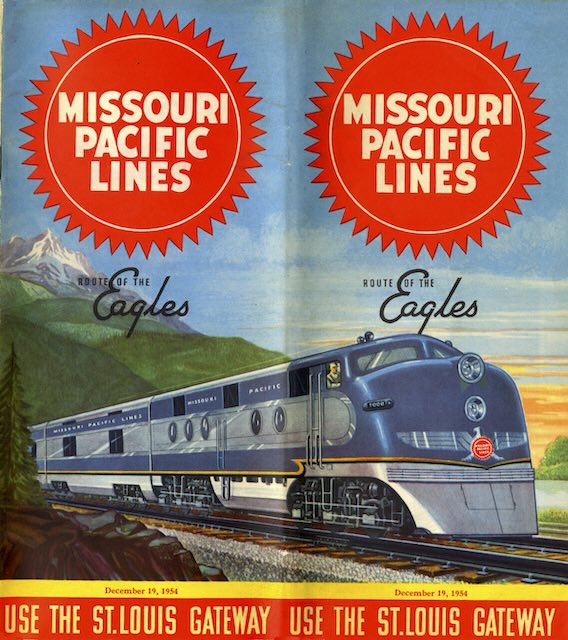The history page in this timetable features the Battle of New Orleans, which it describes as “a victory that was not really needed.” As most Americans may recall, the War of 1812 had ended two weeks before the battle, but neither the British nor the U.S. governments were able to inform their Gulf Coast armed forces of the treaty in time to stop the fight. The U.S. won the battle, losing 73 men to more than 2,000 lost on the British side.
 Click image to download a 25.6-MB PDF of this 48-page timetable.
Click image to download a 25.6-MB PDF of this 48-page timetable.
“Had the outcome been reversed the whole course of American history could have been altered,” the timetable claims. I’m not sure what would have been altered unless the British reneged on the treaty. In any case, the artwork, which shows a number of soldiers and specifically identifies Jean LaFitte on the U.S. side and Sir Edward Pakenham on the British side, is signed Keil.
In a change from the previous two timetables shown here, the back cover focuses on passengers by emphasizing “economy meal service for Colorado Eagle coach travelers.” It gives an example of a full roast stuffed turkey dinner for $1.75, or about $20 in today’s money. The inside front cover advertises the dome cars on the various Eagle trains.
The page after the centerfold map advertises Missouri as the “land of industrial diversity.” The last timetable presented here, which was for 8 months before this one, advertised Kansas as “the center of opportunity for industry.” The April 1955 edition presented here a few months ago put Nebraska in the spotlight, but the 1953 timetable shown here a couple of days ago didn’t use this page to advertise states.
This timetable’s quiz asks people to identify the names of towns in the timetable that are the same as other cities in the country. The city emphasis is continued with a column on the origins of the names of selected towns on the timetable. The timetable also notes that “Missouri Pacific to be 100% Dieselized in 1955” with the delivery of 66 new GP-9s, a prediction that came true when the railroad’s last steam locomotives were retired in April 1955.
